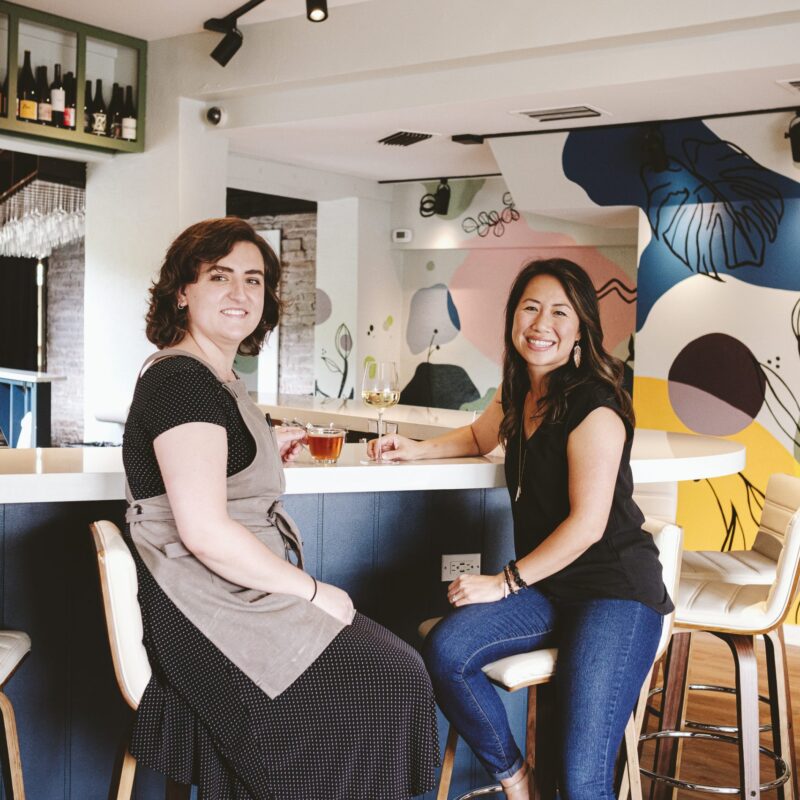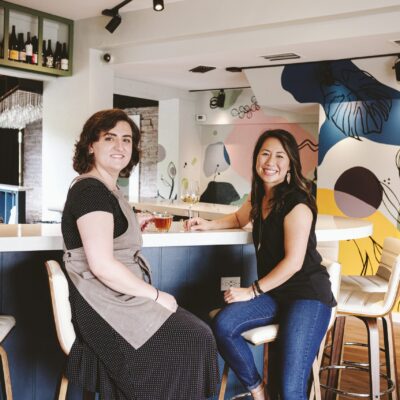Charlottesville isn’t always on top of the latest trends, but that’s not really a bad thing. Several local kitchen designers say our area runs contrary to major national countertop trends in multiple ways, all of which come down to one central theme: color. Or, rather, the lack of it.
Soft, muted colors. Bright pops of color on cabinets and quartz countertops are all the rage in major metros, but Charlottesville doesn’t seem to be down with that, according to Ausra Sargunaite, office and showroom manager for Albemarle Countertop. “I really don’t think we are going to get into that brightly colored cabinet and counter trend because homes are too traditional here,” she says.
Conservative quartz. Modern engineered materials are great at displaying bright colors, and while Lori Randle of Cabinet Solutions says her customers aren’t necessarily going for that look, some of them are taking advantage of quartz for its ability to hold muted solid colors while requiring little maintenance. “Simplifying the lines and the contrasts definitely seems to be the trend for my clients,” she says.
Sargunaite says she’s not seeing as much quartz among her clients, but the one exception is those who want to achieve the appearance of white marble without having to be concerned that every acidic food in their kitchen will etch into the counter.
Accompanying white cabinets. For years folks were putting up natural wood-toned cabinets and pairing them with various granite-patterned counters. But the era of the white cabinet has arrived, and it’s having a huge effect on counters. Sargunaite says the most common look is to contrast sharply with a black countertop, like that achieved with soapstone, but some are going the opposite direction and pairing white with white.
“It definitely all has to coordinate,” Randle says. “The countertop is almost like a rug in a room. They take on a life of their own, and the other finishes build on that.”
Subway splash. Charlottesville isn’t going crazy with backsplashes, either, Sargunaite says. They’re largely sticking with subway tile, the recognizable rectangles popularized by New York City subway designers in the early 1900s. “For the last five years, with the peak being two to three years ago but still continuing, it was white cabinets with black countertops and white subway tile,” she says.
Randle says her clients will also go for a stone veneer or glass tile from time to time, but she agrees subway tile maintains appeal. “I think people really relate to that brick pattern, and it seems very organic and rooted in our history,” she says. “Plus subway tile is being offered in so many colors. They have elevated the basic subway tile.”
Soapstone capital
Charlottesville has always been ahead of the national countertop curve on soapstone, and it probably isn’t going away anytime soon, as the largest domestic producer is just outside town.
“The popularity of soapstone is going up significantly every single year,” says Sargunaite. “Five years ago we were doing just a few soapstone counters, now every second kitchen is soapstone.”
Sargunaite says the popularity is driven largely by environmentally conscious customers who appreciate that the heavy material doesn’t have to be transported long distances to make it to their Charlottesville kitchens.
Lori Randle of Cabinet Solutions says soapstone offers an organic-looking work surface that at the same time is aesthetically versatile; its soft black finish and white marbling goes with just about anything.
“When you mine soapstone, it’s basically a gray stone,” says Dave Trimbur, owner of countertop fabrication outfit Virginia Soapstone. “One of the neat things about it is it has these pretty veins, similar to marble, and when you oil it, they pop. It looks great with white cabinets.”—S.G.





